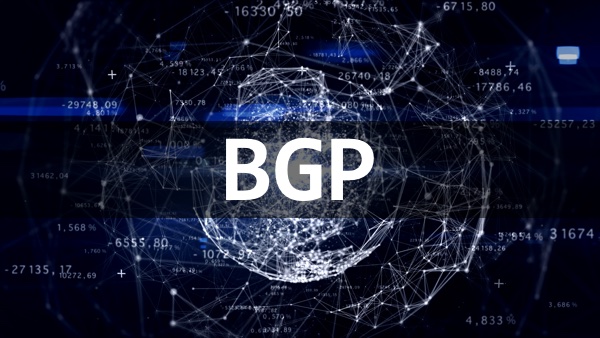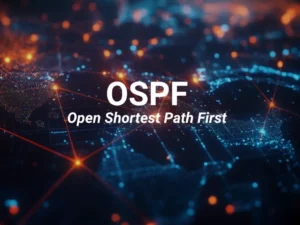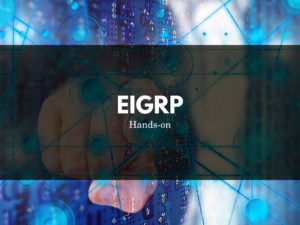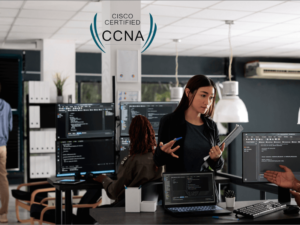BGP Practice Labs
- Description
- Curriculum
- Reviews
This course offers a series of hands-on labs to master BGP, a path-vector routing protocol critical for managing routing between autonomous systems. Participants will configure and verify iBGP and eBGP, manage route advertisements, manipulate path attributes like AS_PATH, LOCAL_PREF, and MED, implement route filtering using prefix lists and route maps, BGP communities, and configure BGP for both IPv4 and IPv6 environments. Advanced labs focus on tuning BGP convergence, optimizing attributes, and troubleshooting common issues like route flapping and missing routes. Each lab includes detailed objectives, topology diagrams, configuration steps, and verification commands to ensure proficiency in BGP deployment and maintenance. The course prepares students for the CCNP ENARSI exam and equips them with practical skills for enterprise and service provider network management.
-
1Lab 8 - Objectives and BackgroundText lesson
In this lab you will configure eBGP for IPv4
-
2Part 8.1: Configure Device Settings and Interface AddressingText lesson
In Part 1, you will set up the network topology and configure basic settings and interface addressing on routers
-
3Part 8.2: Configure and Verify eBGP for IPv4 on all RoutersText lesson
In this part you wil configure and verify eBGP for IPv4
-
4Part 8.3: Configure and Verify Route Summarization and Atomic AggregateText lesson
In this part, you will configure and verify route Summarization
-
5Part 8.4: Configure and Verify Route Summarization with Atomic Aggregate and AS-SetText lesson
Configure route summarization using atomic aggregate and AS-Set
-
6Part 8.5: Configure and Verify the Advertising of a Default RouteText lesson
In this part, you will configure and advertise default route via BGP
-
7Objectives and BackgroundText lesson
In this lab, you will configure MP-BGP, BGP for IPv4 and IPv6 using address families.
-
8Part 1: Basic Device Settings and Interface AddressingText lesson
In Part 1, you will set up the network topology and configure basic settings and interface addressing on routers.
-
9Part 2: Configure MP-BGP on all RoutersText lesson
This part you configure BGP for IPv4 and IPv6 using address-family
-
10Part 3: Verify MP-BGPText lesson
This part you will verify BGP neighbours and routing for IPv4 and IPv6
-
11Part 4: Configure and Verify IPv6 Route SummarizationText lesson
Summarizing prefixes conserves router resources and accelerates best-path calculation
-
12Lab 10 - Objectives and BackgroundText lesson
In this lab you will configure Multi-Protocol BGP and implement various path manipulation options for both IPv4 and IPv6.
-
13Part 1 - Configure Basic Device SettingsText lesson
In Part 1, you will set up the network topology and configure basic settings and interface addressing on routers.
-
14Part 2: Configure and Verify Multi-Protocol BGP on all RoutersText lesson
In Part 2, you will configure and verify Multi-Protocol BGP on all routers to achieve full connectivity between the routers

Duration: 20 hours (self-paced, split across 8 lab sessions)
Level: Intermediate to Advanced
Delivery Method: Virtual labs with step-by-step guides and topology files
Tools Required: EVE-NG, Cisco Packet Tracer, CML, GNS3, or physical Cisco routers (IOS 15.x or later)
Certification Alignment: CCNP ENCORE, CCNP Enterprise (ENARSI 300-410)
Prerequisites: Basic understanding of IP networking, routing protocols, and Cisco IOS commands
Hardware/Software:
EVE-NG, Cisco Packet Tracer or Cisco CML installed on a computer with at least 8GB RAM
Cisco IOS routers (physical or emulated, IOS 15.x or later)
Basic familiarity with Cisco IOS command-line interface
Knowledge:
Understanding of IP addressing (IPv4/IPv6), subnetting, and basic routing concepts
Familiarity with Cisco certification objectives CCNA, CCNP, CCIE
CCNP Candidates: Those pursuing the CCNP ENCORE. CCNP Enterprise (ENARSI 300-410) or CCIE certification, focusing on BGP Path Manipulation and troubleshooting.
CCIE Candidates: Advanced learners aiming for the CCIE Enterprise Infrastructure certification, requiring in-depth knowledge of BGP optimization and complex configurations.
Network Administrators: Professionals working with Cisco-based enterprise networks who need hands-on experience with BGP for deployment and maintenance.







